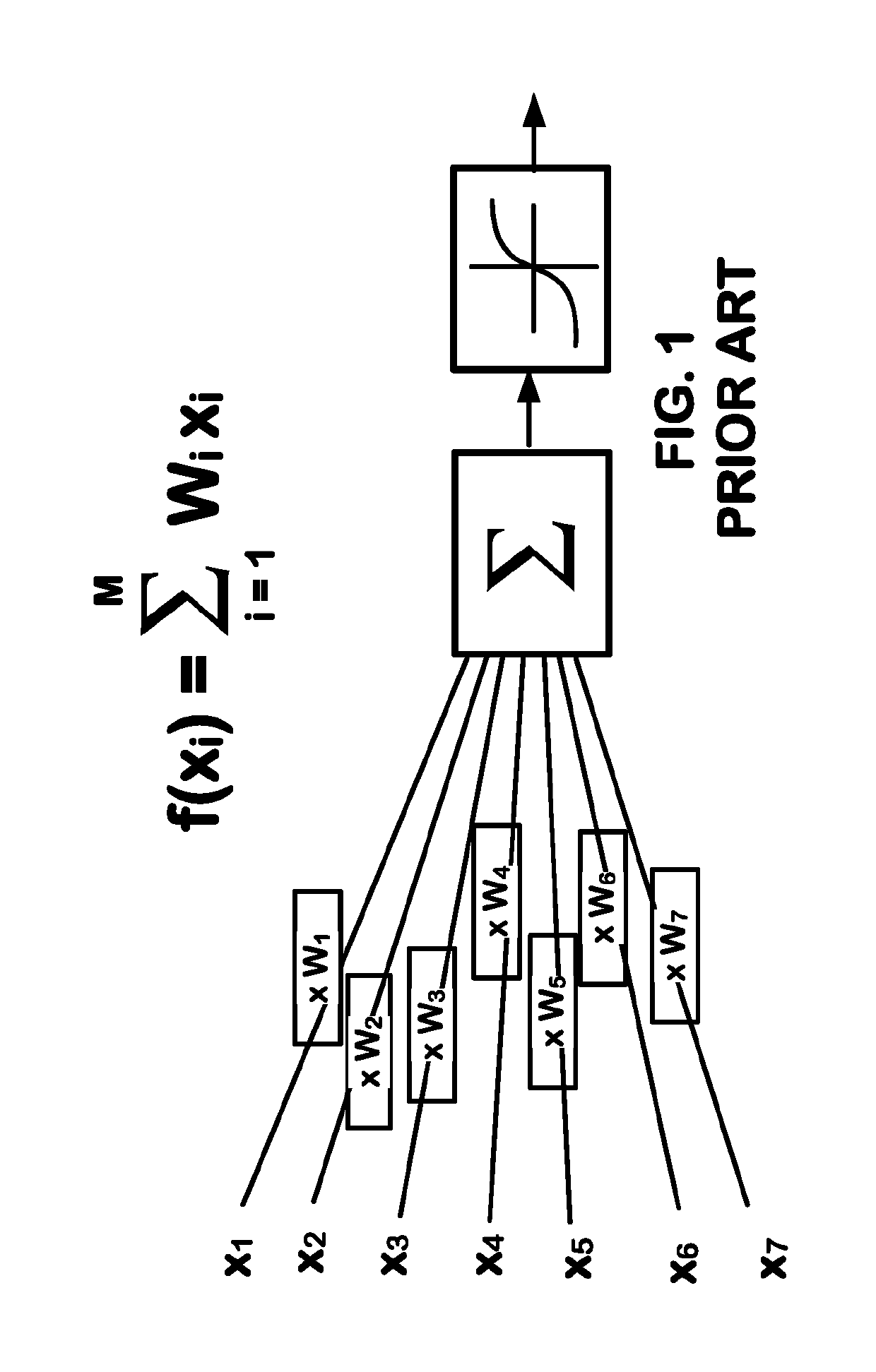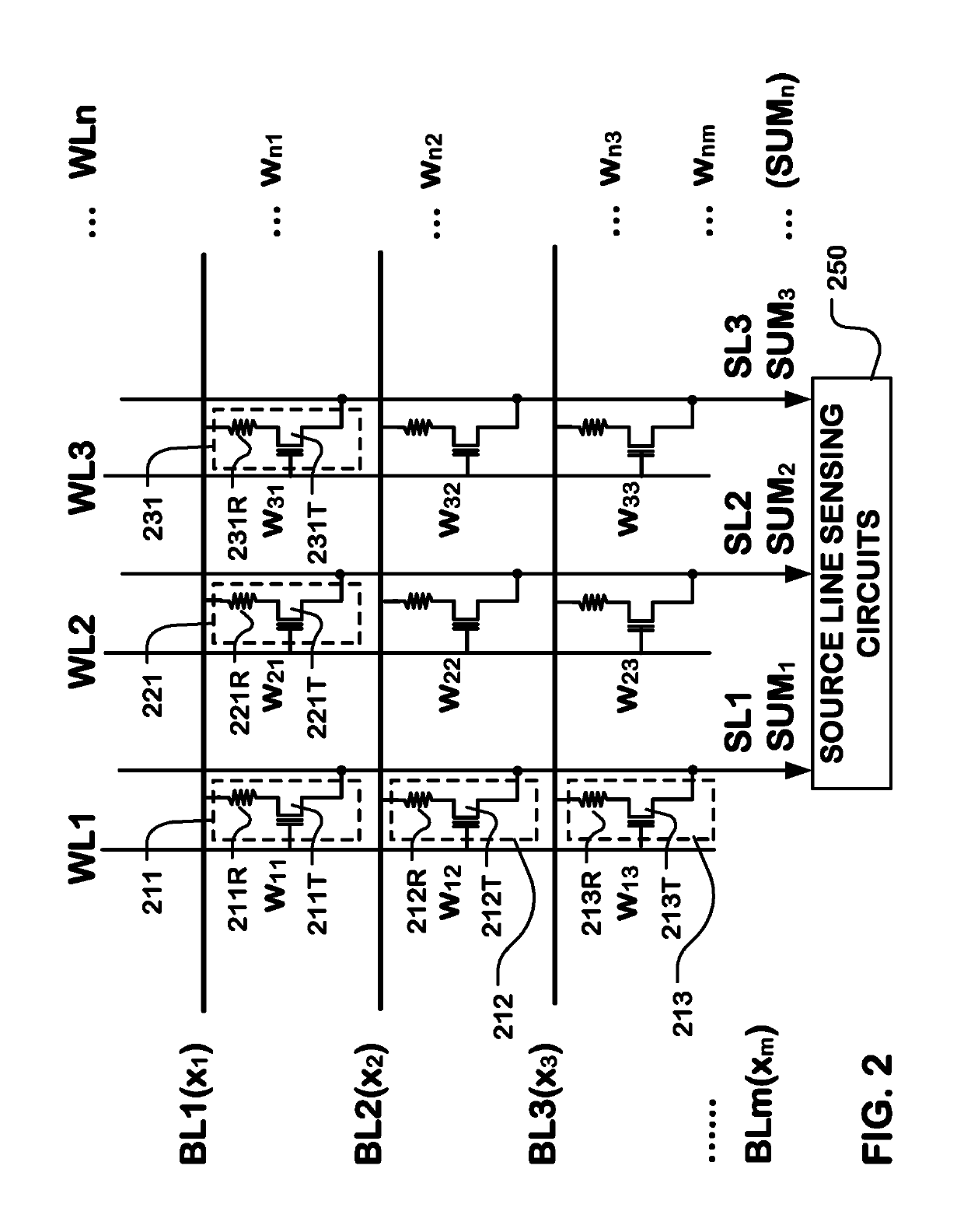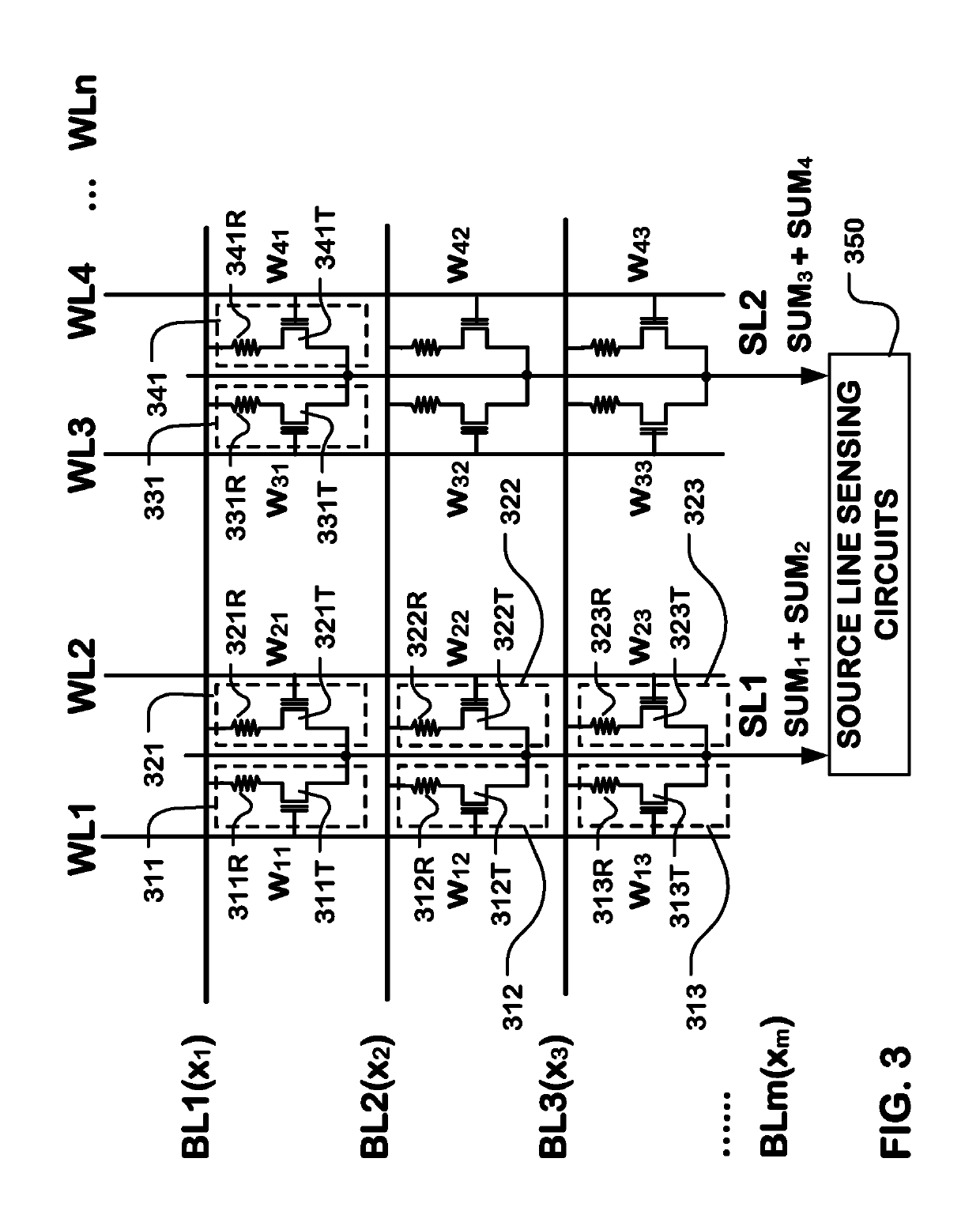Device structure for neuromorphic computing system
a computing system and neuromorphic technology, applied in computing models, biological models, instruments, etc., can solve the problem of large current consumption of total devices
- Summary
- Abstract
- Description
- Claims
- Application Information
AI Technical Summary
Benefits of technology
Problems solved by technology
Method used
Image
Examples
first embodiment
[0050]FIG. 5A illustrates a row by four columns of resistance cells in an array of resistance cells having a number M of rows and a number N of columns of resistance cells on a substrate (e.g. 500) in accordance with a Each resistance cell in the row of resistance cells (e.g. 531A, 532A, 533A, 534A) has a transistor (e.g. 521) and a resistive element in series with the transistor. As shown in the example of FIG. 5A, a transistor (e.g. 521) in a resistance cell (e.g. 531A, 532A, 533A, 534A) is a floating gate device having a word line (e.g. WL1, WL2, WL3, WL4) and a floating gate (e.g. FG1, FG2, FG3, FG4), where the word line can act as a control gate over the floating gate. A transistor in a resistance cell can also be a dielectric trapping device, in an alternative embodiment. A first source line (e.g. SL1) is coupled to the transistors (e.g. 521 and 522) in resistance cells in two adjacent columns of resistance cells. A second source line (e.g. SL2) is coupled to the transistors ...
second embodiment
[0055]One difference is that in the second embodiment, the resistive elements (e.g. 581B, 582B, 583B, 584B) comprising the layer of higher resistivity material are disposed in a patterned resistive layer underlying and contacting the bit lines (e.g. BL1) and overlying and contacting upper ends of the interlayer conductors (e.g. 571, 572, 573, 574). In patterned resistive layer, the resistive elements (e.g. 581B, 582B, 583B, 584B) are physically separated from each other.
[0056]FIG. 5C illustrates a row by four columns of resistance cells in an array of resistance cells having a number M of rows and a number N of columns of resistance cells in accordance with a third embodiment. Each resistance cell in the row of resistance cells (e.g. 531C, 532C, 533C, 534C) has a transistor and a resistive element in series with the transistor. Description about like elements in the first embodiment, including the substrate, the transistors in the resistance cells, the source lines and the bit lines...
third embodiment
[0057]One difference is that in the third embodiment, the resistive elements (e.g. 581C, 582C, 583C, 584C) comprising the layer of higher resistivity material are disposed beneath and contacting lower ends of the interlayer conductors (e.g. 571-574) in a substrate. The device comprises peripheral circuits such as sense amplifiers (e.g. 780, FIG. 7) that can have contacts in a substrate. Contacts of the peripheral circuits in a substrate have a lower resistance than the resistive elements comprising the layer of higher resistivity material in the resistance cells in the array of resistance cells.
[0058]FIG. 5D illustrates a row by four columns of resistance cells in an array of resistance cells having a number M of rows and a number N of columns of resistance cells in accordance with a fourth embodiment. Each resistance cell in the row of resistance cells (e.g. 531D, 532D, 533D, 534D) has a transistor and a resistive element in series with the transistor. Description about like elemen...
PUM
 Login to View More
Login to View More Abstract
Description
Claims
Application Information
 Login to View More
Login to View More - R&D
- Intellectual Property
- Life Sciences
- Materials
- Tech Scout
- Unparalleled Data Quality
- Higher Quality Content
- 60% Fewer Hallucinations
Browse by: Latest US Patents, China's latest patents, Technical Efficacy Thesaurus, Application Domain, Technology Topic, Popular Technical Reports.
© 2025 PatSnap. All rights reserved.Legal|Privacy policy|Modern Slavery Act Transparency Statement|Sitemap|About US| Contact US: help@patsnap.com



